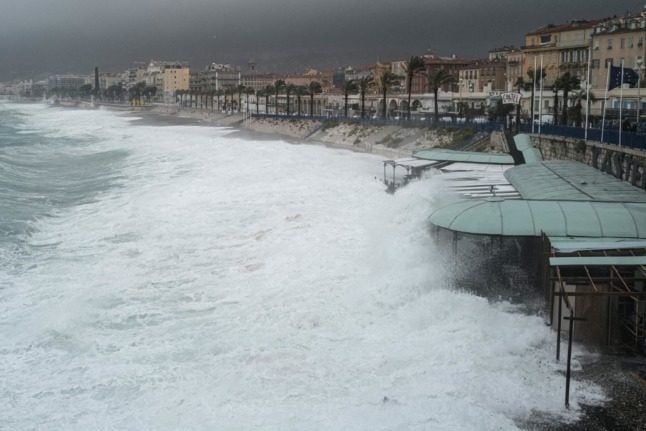CLICK HERE for an update on the floods as death toll rises to four
??? Situation très compliquée pour les habitants de la petite ville Le Muy dans le #Var. Un canot de sauvetage des #pompiers s'est retourné, tous ses occupants sont tombés dans l'eau. Les dégâts étaient déjà colossaux à 17h. #intemperies #VigilanceRouge pic.twitter.com/ta1epoDl47
— La Plume Libre (@LPLdirect) November 23, 2019
Inondation, soyez prudents
Intervention des pompiers#Cannes #AlpesMaritimes #paca #antibes #nice #biot #mandelieu #var #frejus #alerte #meteo #Pluie #PluieInondation #METEO83 #meteo06 pic.twitter.com/M0SHwNqXRX— Cannes citoyen (@cannescivisme) November 23, 2019
[ Intempéries ]
Voulu par @davidlisnard, le sytème d’alerte par haut-parleurs mis en place par la @villecannes trouve toute son utilité et sa pertinence lors des circonstances exceptionnelles comme la #VigilanceRouge #Inondation que connaissent les #AlpesMaritimes aujourd’hui. https://t.co/NFakemc2up
— Thomas Onzon (@Thomas_ONZON) November 23, 2019
Mauvais temps en France – Deux personnes disparues après une inondation sur la Côte d'Azur – Actualités https://t.co/5oZ3iuKodc pic.twitter.com/QTDk0n99EA
— FR24 News française (@FR24NewsFR) November 24, 2019
⚠️ Notre département est en vigilance rouge pluie-inondation !
La préfecture des Alpes-Maritimes vous appelle à éviter les déplacements.
Quelques photos de la Roya à 17h. pic.twitter.com/ZKNB8uJvIg
— Laurence Boetti-Forestier (@LaurenceBoetti) November 23, 2019



 Please whitelist us to continue reading.
Please whitelist us to continue reading.
Member comments